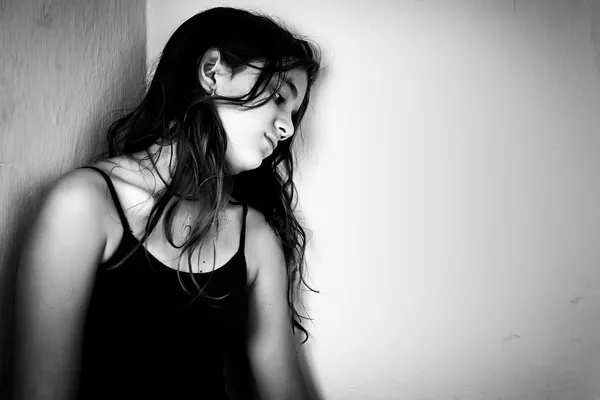Panic attacks are a debilitating and often misunderstood mental health phenomenon that can strike without warning, leaving individuals overwhelmed by intense fear and discomfort. While panic attacks share common features, such as a sudden onset of anxiety and physical symptoms, there is a nuanced spectrum within this experience. This article aims to delve into the intricacies of panic attacks, focusing on three distinct types that offer a comprehensive understanding of this mental health challenge.
I. The Classic Panic Attack:
The classic panic attack is the most widely recognized type, characterized by a sudden surge of intense fear or discomfort that peaks within minutes. Individuals experiencing a classic panic attack often report symptoms such as heart palpitations, sweating, trembling, shortness of breath, and a sense of impending doom. These attacks can be triggered by stress, trauma, or specific phobias, but they can also occur seemingly out of the blue.
A. Biological Mechanisms:
The classic panic attack is closely tied to the body’s fight-or-flight response, which is activated in perceived threats. The sympathetic nervous system releases adrenaline, leading to the physical symptoms associated with panic attacks. Understanding the biological underpinnings helps demystify these episodes and underscores the importance of a holistic approach to treatment.
B. Psychological Triggers:
Psychological triggers for classic panic attacks can vary widely among individuals. They may include traumatic events, chronic stress, or even certain phobias. Identifying these triggers is crucial for effective intervention and management. Cognitive-behavioral therapy (CBT) is a widely used approach to help individuals recognize and modify thought patterns that contribute to panic attacks.
C. Treatment Strategies:
Treatment for classic panic attacks often involves a combination of psychotherapy, medication, and lifestyle adjustments. Medications such as selective serotonin reuptake inhibitors (SSRIs) or benzodiazepines may be prescribed to manage symptoms, while therapy helps individuals develop coping mechanisms and address underlying triggers.
II. Situational Panic Attacks:
Situational panic attacks are distinct from the classic type in that they are triggered by specific situations or environments. Unlike generalized anxiety, situational panic attacks are acute, occurring predominantly in response to particular stimuli. Common triggers include crowded spaces, public speaking, or enclosed areas, and individuals may go to great lengths to avoid these situations to prevent an attack.
A. Phobias and Triggers:
Situational panic attacks are often linked to phobias, intense and irrational fears of specific objects or situations. For example, agoraphobia, the fear of open or crowded spaces, can lead to panic attacks when individuals find themselves in such environments. Understanding the relationship between phobias and situational panic attacks is crucial for tailored treatment plans.
B. Exposure Therapy:
Exposure therapy, a type of cognitive-behavioral therapy, is a key component in treating situational panic attacks. This approach involves gradually exposing individuals to the feared situations in a controlled and supportive environment. Over time, this exposure helps desensitize the individual and reduce the intensity of panic attacks associated with specific triggers.
C. Medication and Relaxation Techniques:
In addition to therapy, medications such as beta-blockers may be prescribed to manage physical symptoms associated with situational panic attacks. Relaxation techniques, including deep breathing and mindfulness, are valuable tools to help individuals cope with anxiety in real-time and prevent the escalation of panic.
III. Nocturnal Panic Attacks:
Nocturnal panic attacks, as the name suggests, occur during sleep and can be particularly distressing for individuals who experience them. These attacks often awaken the person abruptly, leading to a heightened sense of fear and confusion. Understanding the unique challenges posed by nocturnal panic attacks is essential for effective intervention and improved sleep quality.
A. Sleep Disorders and Nocturnal Panic:
Nocturnal panic attacks are frequently associated with sleep disorders, such as insomnia or sleep apnea. Identifying and addressing underlying sleep issues is crucial in managing these attacks. Sleep studies and assessments by sleep specialists may be necessary to uncover and treat any coexisting sleep disorders.
See Also:Does Alcohol Cause Panic Attacks?
B. Cognitive-Behavioral Therapy for Insomnia (CBT-I):
Cognitive-behavioral therapy for insomnia (CBT-I) is a targeted approach that addresses the interplay between sleep disorders and nocturnal panic attacks. This therapy focuses on improving sleep hygiene, modifying dysfunctional beliefs about sleep, and establishing a consistent sleep routine. CBT-I has shown promising results in reducing the frequency and intensity of nocturnal panic attacks.
C. Relaxation Techniques and Medications:
Implementing relaxation techniques before bedtime, such as progressive muscle relaxation or guided imagery, can be beneficial in preventing the onset of nocturnal panic attacks. Additionally, medication options, such as certain antidepressants, may be considered in consultation with a healthcare professional to manage both anxiety and sleep disturbances.
Conclusion:
Panic attacks are multifaceted experiences that manifest in various forms, each requiring a tailored approach to intervention and management. Recognizing the differences between classic panic attacks, situational panic attacks, and nocturnal panic attacks is essential for healthcare providers, therapists, and individuals themselves. A comprehensive treatment plan may involve a combination of psychotherapy, medication, and lifestyle adjustments, emphasizing the importance of addressing both the psychological and physiological aspects of panic attacks.
As awareness of mental health issues continues to grow, fostering a deeper understanding of panic attacks and their nuances is crucial for destigmatizing these experiences and promoting effective support and treatment. By exploring the distinct types of panic attacks, we can contribute to a more empathetic and informed discourse surrounding mental health, ultimately improving the lives of those grappling with these challenging conditions.
Related Topics:
How Do You Calm a Panic Attack at Night?
Can Dehydration Trigger Panic Attacks?
What Will You Feel After A Panic Attack?


